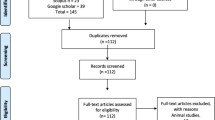Abstract
Aims
To evaluate the indications for carotid arterial imaging in an open access vascular laboratory. To identify those symptoms predictive of > 50% stenosis of the carotid artery in order to reduce unnecessary imaging. To test the hypothesis that duplex scanning would not be of significant benefit in the management of those patients with ill defined symptoms.
Methods
We compared the outcome of carotid duplex scanning performed on 816 consecutive patients referred for a variety of clinical indications. The medical records of 816 patients were retrospectively analysed to identify the clinical indication for carotid duplex imaging over a three-year period (1997–9).
Results
The indications for duplex imaging were divided into two groups: definite carotid symptoms, n=350 (transient ischaemic attack n=205, cerebrovascular accident n=66, amaurosis fugax n=49, dysphasia n=30); and non-carotid symptoms, n=466 (dizziness n=63, syncope n=63, confusion n=20, vertigo n=10 and others n=310). Less than 5% of those with definite carotid symptoms and 2% of those with ill-defined symptoms had a stenosis > 80%.
Conclusion
Regardless of symptoms, 14% and 2.9% of patients referred for carotid duplex imaging have a stenosis of ≥ 50% and ≥ 80%, respectively. Patients without definite carotid symptoms are of low priority for duplex imaging.
Similar content being viewed by others
References
Hill SL, Holtzman GI, Berry R, Arnold JF. The appropriate use of the carotid duplex scan in carotid arterial disease.Am Surg August 1997; 720–5.
AbuRahma AF, Pollock JA, Robinson PA, Mullins D. The reliability of colour duplex ultrasound in diagnosing total carotid artery occlusion.Am J Surg 1997; 174(2): 185–7.
Thusay MM, Khoury M, Greene K. Carotid endarterectomy based on duplex ultrasound in patients with and without hemispheric symptoms.Am Surg 2001; 67(1) 1–6.
Holdsworth RJ, McCollom PT, Stonebridge PA, Bryce J, Harrisson DK. What are the indications for a carotid duplex scan?Clin Rad 1996; 51; 801–3.
Lee TT, Solomon NA, Heidenreich PA, Oehlert J, Garber AM. Cost effectiveness of screening for carotid stenosis in asymptomatic persons.Ann Intern Med 1997; 126: 337–46.
Matzchs T. Carotid endarterectomy — what are we doing?Eur J Vasc Endovasc Surg 1997; 14: 327–8.
Kumar S, Osman IS, Woolard CJ, Cameron AEP. ‘Fast-track’ carotid duplex scanning in a district general hospital.Ann Royal Coll Surg Engl 2000; 82; 167–70.
Author information
Authors and Affiliations
Corresponding author
Rights and permissions
About this article
Cite this article
Ahmed, A.S., Foley, E., Brannigan, A.E. et al. Critical appraisal of the application of carotid duplex scanning. Ir J Med Sci 171, 191–192 (2002). https://doi.org/10.1007/BF03170277
Issue Date:
DOI: https://doi.org/10.1007/BF03170277




